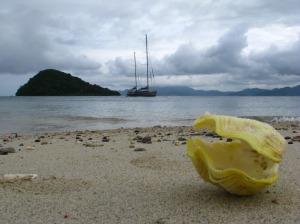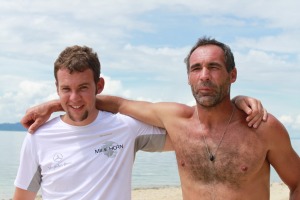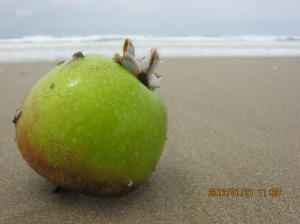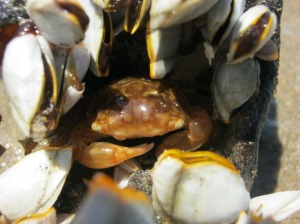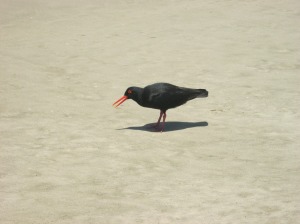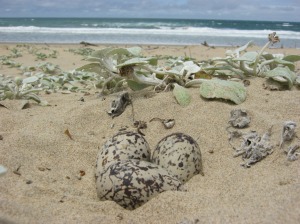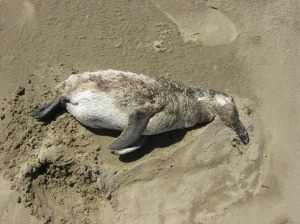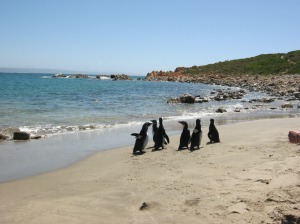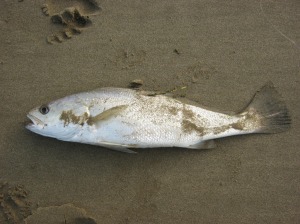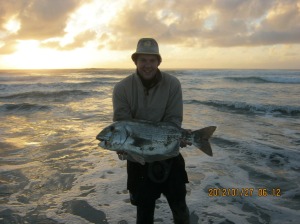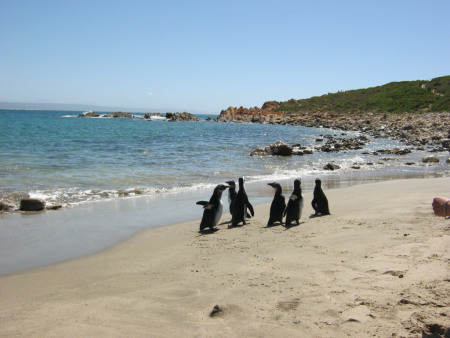
My journey with Pangaea started in 2008, when my mother opened the newspaper one Saturday morning and read about Mike Horn’s incredible YEP program. Mike was selecting young people from all over the world to explore exotic locations and have a part in saving the planet through his explore, learn and act policy.
What followed were many attempts to be part of the program and in January 2010, I was selected with 7 other young explorers to take part in the Borneo Act Project. It was an amazing experience spending a month on the Pangaea while exploring Borneo – learning about the inhabitants and doing beach and reef clean ups.
I have finished 2 years of theoretical training in Nature Conservation at the Nelson Mandela Metropolitan University (NMMU) at the end of 2011 and started immediately with my practical year at the Fransmanshoek Conservancy close to Vleesbaai in the Western Cape, South Africa.
To do the practical successfully, the University issues a list of requirements that we have to complete. This includes the following:
- Monitoring the State of Biodiversity (dead birds and mammals that wash up on the beach),
- The African Black Oystercatcher breeding success (Oystercatchers birds are endemic to Southern Africa and their numbers are endangered due to 4×4 vehicles driving on the beaches and dogs disturbing their nests ).
- Routine patrols to check anglers and spear fisherman’s licenses.
- Counting and surveying bird numbers and species that occur in the conservancy.
- Monitoring trap cameras to see if there are any interesting species coming in to the area.
- Monitoring alien species and control them eradication.
- Other activities include erosion control and GIS.
The conservancy appointed two students to gain practical experience this year and as soon as Marcel and I arrived, we had to get everything ready for the holidaymakers. We had to clean and paint the caravans and camping sites; clear bushes and pathways, service equipment and get the admin work up to date. We met many of the land owners of the Conservancy, as well as holidaymakers and fisherman, learning a lot and enjoying every minute of it.
The weather has been super warm and the ocean’s temperature an incredible 24 degrees Celsius.
On New Years Eve, everybody gathered on one of the farms for a party. They asked us to give an informal speech about the conservancy’s goals and objectives. While we were standing around the fire thinking about the speech, we got a call from a concerned resident from Boggoms bay. While off loading a bag of fire wood from his car, he saw a suspicious looking tail… He dragged the bag to an open grass patch and phoned us.
Marcel slowly removed the wood piece by piece and while I was holding the snake box open, we tried to find out what type of snake it was.
With the bag almost empty the snake decided that it had to find a new home. As it sailed out, the small crowd that had gathered on the balcony of a nearby house gave a loud scream. The Cape Cobra of 1.3m sailed straight towards their house. With the snake thongs Marcel and I maneuvered the snake into the snake box and then took it out of the residential area, back to where it came from.
Not a bad end to the year. It was our first snake capture and with that, one of the most venomous snakes in Africa.
We were speechless for a while, but after a couple of beers we delivered applaud winning speeches!
During Patrols and time spent monitoring the beaches we see lots of rubbish wash up on the shore. It’s quite shocking to see what junk people leave on the beaches or just drop over the side of a boat. We get called out quite often to save animals entangled in fishing line and other rubbish. Late one Sunday, out manager, Roland, and I were called out to help a seal that had some fishing line tangled round his body. As we approached the seemingly dead seal we decided our plan of action would be to chase it away from the water’s edge and then while holding it down cut the fishing line from its body. We approached from the water’s edge and the next moment the seal jumped up and ran mouth open screaming straight at us. Roland and I dived out of the way at the last moment seeing the seal was not going to stop… I only got up a long while later having laughed myself silly at our “Plan” and our execution thereof!
The ban of vehicles on beaches, that was imposed a couple of years ago, had a positive effect on stabilizing the number of African Black Oystercatcher birds.
The conservancy has 18.5km of shoreline to patrol and monitor. There are quite a few nests that we check on every patrol to see how many eggs have been laid as well as how many have hatched. This data is then sent to Cape Nature to see if there is an increase in their numbers. In one of the nests there were 3 eggs (a first for the conservancy) and it seemed to me as if the population were doing well. After speaking to Rhet Hiseman from Cape Nature he brought to my attention that Oystercatchers lay only 3 eggs in times of stress. After looking at the bigger picture I realized that this could be due to people walking on the beach with their dogs unleashed. The dogs chase the birds off the nests long enough to make the eggs overheat. I decided there and then that I was going to make people aware of the Oystercatcher’s plight.
On a recent patrol I found a sick penguin on the beach and picked it up and started to carry it with me. Beach patrols can be anything from 5 to 15 km and this one was about 11 km. I picked the penguin up halfway through the patrol with the closest road many kilometers away. I walked a long way, over the dunes, singing a lullaby to calm the penguin and longing for drinking water as it was very hot.
After a couple of hours I made it to the farm next to the office. Suddenly my cell phone rang and I handed the penguin to a farm laborer. Someone has spotted suspicious looking divers in the water close to the peninsula.
The next moment the penguin lets out a loud grunt and pooh’s al over the laborer’s shoe. I quickly took the penguin from him and made my way to the office were I found a box to put it in.
When I arrived at the peninsula, Roland was already checking permits. We found that the divers had taken 20 Cape Rock Oysters over the subscribed limit. A stern warning later and their permit data captured, we trust that this will not happen again.
Back at the office, the lady from SAPREC collects the penguin. He will make a full and speedy recovery in their capable hands.
During my off days and late afternoons after work I take part in my other passion; Tag and release fishing. I used to fish competitively for my province but due to studies and working I mostly now days target edible species that I then tag and release. The data is sent to ORI (Oceanographic Research Institute) in Durban were it is put on a massive database. When an angler catches a tagged fish he sends the data back to ORI were the scientists can then see what the fish’s movements were and how much it had grown from the first catch to the next. The data is then used to compile legal bag and size limits for each species.
Here are some pictures of fish that I have caught and released recently.
Small tagged Cob caught. The fish swam more than a year and a half free, grew 12.5cm and was caught 48km from where it was first caught.
I didn’t choose Nature Conservation as a career. Nature Conservation chose me. Mike Horn and his program gave me the opportunity to realize my dream and help to save our planet.
- Date: Winter 2012
- Location: South Africa

